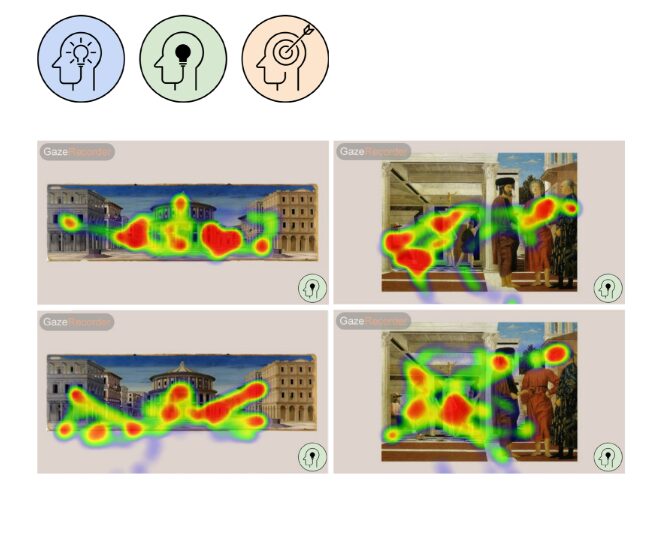Starting from the complex question of accessibility to cultural contents, especially museums, the research proposes a reflection on the role of drawing, supported by an experiment where it carries out the action of ‘cultural mediation’, in capable of transforming the experience of an image into an aesthetic experience. The investigation conducted has had as its object the National Gallery of Marche, evaluating the effectiveness of informative multimedia products to improve accessibility to a heterogeneous audience. The detail was investigated behavior of individuals with Specific Disorders of Learning (DSA), with a view to inclusive communication. The first results showed differentiated impacts on the various groups of users, opening up to the first considerations on improving the visual presentation for the subjects DSA. The desirable objective is to extend such studies in order to design routes and products and increasingly accessible experiences, that is accessibility in its broadest sense. cultural accessibility cultural mediation visual experience aesthetic experience National Gallery of the Marche Cultural Accessibility Cultural Mediation Visual Experience Aesthetic Experience National Gallery of the Marche Addressing the complex issue of accessibility to cultural content, especially within museum contexts, this research delves into the role of representation, substantiated by an experiment in which it takes on the role of ‘cultural mediation’, capable of transforming the experience of an image into an aesthetic one. The conducted study focused on the National Gallery of the Marche, evaluating the effectiveness of multimedia informative products in enhancing accessibility for different audiences. Specifically, the research scrutinized the behavior of individuals with Specific Learning Disorders (SLD), within the framework of inclusive communication. Initial findings revealed differentiated impacts across various user groups, initiating a starting point on the enhancement of visual presentation for individuals with SLD. The aim is to extend such studies to design pathways, products, and experiences that are increasingly accessible, interpreting accessibility in its broadest sense.

Methodology and experimentation
The proposed experimentation aims to: validate the actual effectiveness of a particular cultural communication product designed for GNM, i.e. a vi- 556 deo which illustrates the meaning and value of perspective in relation to some architectural works and places of the GNM. This draws its results from the administration of a test divided into two blocks, in which the first measures and analyses the perceptual response of the subjects through tracking eyepiece – via webcam and GazeRecorder web software – e in the second the subjects are profiled by matching the results of the perceptual tests. In this phase of the research we chose to operate through tracking via webcam for the possibility of a more easy administration, as it can be carried out remotely volunteer subjects with the aid of a video camera which, as known, it is now integrated into most computers. Eye tracking techniques have evolved in time and have been applied to various disciplines, from marketing to psychology, from education to design, from art to architecture. To cite some examples relating to the closest areas to the present research, that of architecture and art, yes reports the application of the eye-tracking technique used to support the hypotheses of spatial reconstructions of spaces utopians represented by Piranesi in his Carceri [Menconero 2022]. Another work that exploits this technique, but associating it with EEG devices, was aimed at the analysis of urban landscape with the aim of understanding what they were, during observation, the elements of greatest attraction of an urban environment [Bianconi et al. 2019]. This tool proved to be a useful method for experimental validation of the hypothesis that claimed that Caravaggio used precise visual strategies in his paintings, guiding the observer’s gaze